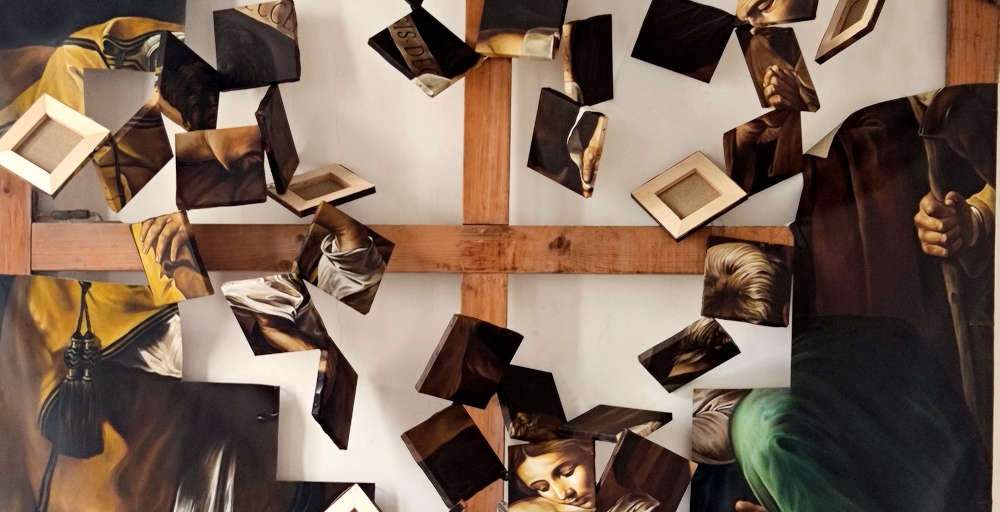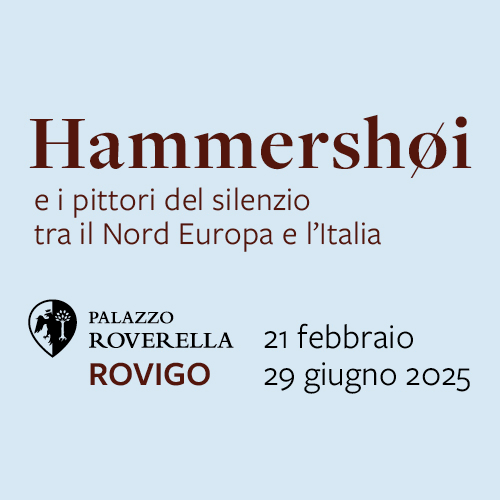Caravaggio dismembered: the work of Spanish painter Javier Carpintero on display in Palermo
A “homage-horror” to Caravaggio: this is how Spanish painter Javier Carpintero (Zamora, 1967) refers to his Caravaggio desmembrado, a work that is on display from Oct. 17 to Dec. 17, 2023 at theOratory of San Lorenzo in Palermo, thehouse of worship where the Nativity with Saints Lawrence and Francis , painted by Caravaggio in 1600 in Rome and stolen from the oratory between Oct. 17 and 18, 1969, and never found again, was located. The exhibition is organized by the Amici dei Musei Siciliani association in collaboration with theInstituto Cervantes of Palermo.
The Spanish artist, with his “dismembered” Caravaggio, adds a chapter to the series of his “homage-overture” to masterpieces by the great masters of the past, and confronts a painting that we have not been able to admire directly for more than half a century. His work is a new reproduction, a life-size oil on canvas, cut into squares framed one by one, 54 as many as the years that have passed since the theft. They represent pieces of a troubled and unclear history, and they float materially around the frame that had housed the Nativity as well as, more symbolically, in memory and consciousness. They are pieces of an intricate and intriguing puzzle, pushing toward the viewer according to a spatial conception borrowed from Caravaggio.
The painting becomes almost sculpture, and in the impossibility of visually recomposing the original iconography the viewer is invited to experiment with different points of view, suggestively recalling the various versions and hypotheses about the fate of the canvas. The artist, alluding to the trade of Saint Joseph(carpintero, in Spanish), signs himself in correspondence to the latter’s head.
Cutting is a recurring operation in Carpintero’s work but here it takes on a special significance, as explained by Michele Cuppone, curator of the exhibition and author of specific studies on the Nativity. From the beginning, in fact, it was suspected that the canvas would be divided into several parts, to be sold separately with less difficulty. According to the recent testimony of a collaborator with the police, this allegedly took place in Switzerland shortly after the theft.
Javier Carpintero’s work stems from an adversarial relationship with the great masters of the past. His can be defined as a kind of homage-obviousness to those masterpieces which, since he does not believe he can emulate, he nevertheless accurately reproduces with the same oil-on-canvas technique as the originals. But the faithful copy has a short life and is soon literally assaulted: it will be partly etched, cut, crumpled, deconstructed. Caravaggio desmembrado thus represents yet another challenge for the artist, who measures himself against a painting that we have not been able to admire directly for more than half a century.
The choice of subject, from an idea of the exhibition’s curator, finds its reason historically in the various versions and hypotheses about the canvas’ fate. From the beginning it was suspected that it would be divided into several parts, to be sold separately more easily, and according to a collaborator of justice this would take place in Switzerland. In addition, unknown fences made a ransom demand in a letter containing a fragment of the painting. Carpintero lays his life-size reproduction on the same frame that, for a few years since the last restoration in 1951, had housed the Nativity. This wooden skeleton once again becomes the support for a new artistic creation, of which it is an integral part: its crossbeams in particular can be glimpsed, with a natural reminder of the cross of Christ and, more suggestively, of the never-silenced grief over the disappearance and perhaps destruction of the masterpiece. A disquiet that the artist himself felt as he dismembered the faithful copy to bring his work to life. The work’s 54 squares symbolically float beyond the space bounded by the frame, into memory and consciousness. They are pieces of a troubled and unclear history, which recent investigations and art-historical studies have only partially restored.
The exhibition is on view until Dec. 17, 2023, daily from 10 a.m. to 6 p.m., at 5 Immacolatella Street.
 |
| Caravaggio dismembered: the work of Spanish painter Javier Carpintero on display in Palermo |
Warning: the translation into English of the original Italian article was created using automatic tools. We undertake to review all articles, but we do not guarantee the total absence of inaccuracies in the translation due to the program. You can find the original by clicking on the ITA button. If you find any mistake,please contact us.
































